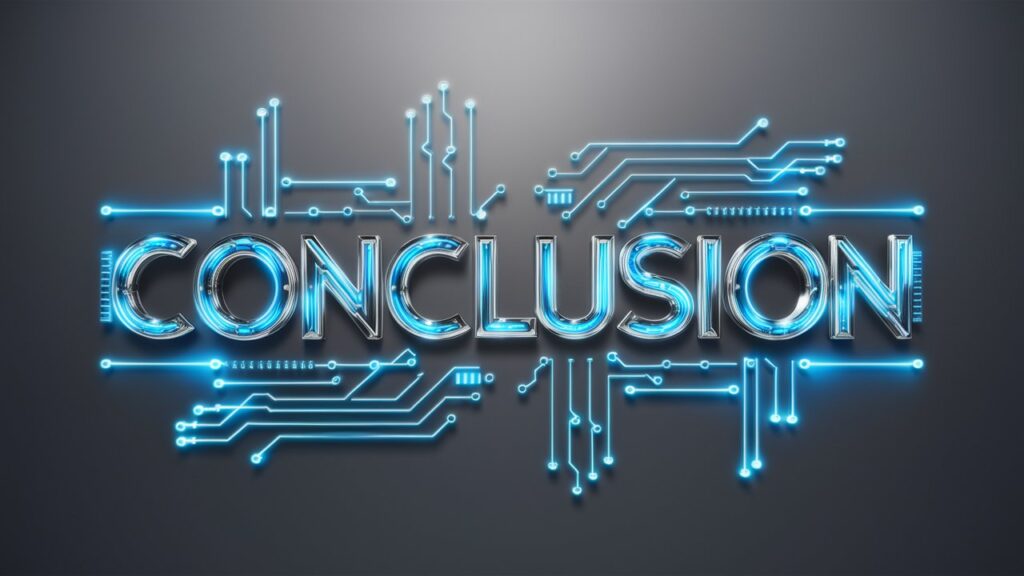Introduction
Imagine scrolling through your social media feed and stumbling upon a news article so shocking that you feel compelled to share it immediately. But what if that article was entirely fabricated, generated by an artificial intelligence (AI) system without any basis in reality? This scenario is not just a hypothetical; it’s a growing concern in our increasingly digital world. The rise of generative AI—AI systems capable of producing text, images, and even videos—has revolutionized content creation, but it also poses significant risks when left unchecked.
As AI systems become more sophisticated, the ability to control their output has become a critical issue. From the spread of misinformation to the creation of deepfakes, the potential for misuse is vast. This article delves into why controlling the output of generative AI is crucial, exploring the associated risks, ethical and legal considerations, and the strategies we can employ to ensure that AI serves society positively.
Table of Contents
The Rise of Generative AI
A Technological Revolution
Generative AI has emerged as one of the most groundbreaking technological advancements in recent years. Powered by machine learning models like GPT-4, DALL-E, and Stable Diffusion, these systems can generate human-like text, realistic images, and even music or art. Businesses, content creators, and developers have quickly adopted generative AI to streamline tasks, innovate, and push creative boundaries.
However, with this technological revolution comes a Pandora’s box of potential problems. The ability to generate content that is indistinguishable from human-created work raises questions about authenticity, trust, and the ethical use of AI.
Real-World Applications and Impacts
The applications of generative AI are vast and varied. In marketing, AI is used to create personalized content at scale. In entertainment, it generates scripts, music, and even video games. In healthcare, AI models can synthesize medical images to aid in diagnosis. While these applications have the potential to drive innovation and efficiency, they also highlight the need for robust controls to prevent unintended consequences.
Potential Risks of Uncontrolled Outputs
Misinformation and Disinformation
One of the most pressing concerns is the spread of misinformation and disinformation. AI-generated content can be used to create fake news articles, misleading social media posts, or even fabricated evidence in legal cases. The rapid spread of such content can have real-world consequences, from swaying public opinion to inciting violence.
For instance, during election cycles, AI-generated fake news can manipulate voter behavior, undermining democratic processes. Without mechanisms to control and verify AI outputs, distinguishing fact from fiction becomes increasingly challenging.
Ethical and Moral Implications
Generative AI systems can perpetuate harmful biases and stereotypes if not properly controlled. AI models trained on biased data can produce outputs that reinforce existing prejudices, leading to discrimination and social harm. For example, an AI system trained on biased text data might generate sexist or racist content, further entrenching these biases in society.
Moreover, the ability to create deepfakes—highly realistic, AI-generated videos or images that depict people doing or saying things they never did—raises significant ethical concerns. Deepfakes can be used for malicious purposes, such as blackmail, identity theft, or political manipulation, highlighting the need for stringent control measures.
Legal Challenges
The legal landscape surrounding generative AI is still evolving, but the potential for legal challenges is vast. Issues such as intellectual property rights, defamation, and privacy violations are increasingly coming to the forefront. For example, if an AI system generates a defamatory article about a public figure, who is held accountable? The creator of the AI model, the user who prompted the AI, or the AI itself?
Without clear legal frameworks and controls, the misuse of generative AI could lead to a proliferation of lawsuits and legal disputes, creating a complex web of responsibility and accountability.
Ethical and Legal Considerations
Navigating the Ethical Landscape
The ethical use of AI is a topic of intense debate among technologists, ethicists, and policymakers. The key ethical considerations include ensuring that AI outputs are fair, transparent, and accountable. This means that AI systems should be designed and trained in a way that minimizes biases and prevents the generation of harmful content.
Transparency is crucial—users should understand how AI systems work, what data they are trained on, and how their outputs are generated. Accountability is equally important, as there must be clear mechanisms for addressing the negative consequences of AI-generated content.
Legal Frameworks and Regulations
Governments and regulatory bodies are beginning to recognize the need for legal frameworks to govern the use of generative AI. In the European Union, the proposed AI Act aims to regulate AI systems based on their potential risks, with stricter controls for high-risk applications. Similarly, other countries are exploring laws that would require AI-generated content to be clearly labeled, ensuring that consumers are aware when they are interacting with AI.
However, the global nature of the internet and the rapid pace of AI development pose challenges to creating cohesive and enforceable regulations. International cooperation and collaboration will be essential to developing legal frameworks that can effectively control AI outputs on a global scale.
Strategies for Effective Control
Implementing AI Control Mechanisms

To mitigate the risks associated with generative AI, various control mechanisms can be implemented. These include:
- Pre-Training Filters: Before an AI model is trained, data can be filtered to remove biased or harmful content. This helps ensure that the AI generates outputs that are fair and non-discriminatory.
- Post-Processing Checks: After content is generated by an AI system, it can be reviewed by human moderators or additional AI systems to detect and remove harmful or inappropriate content.
- User Guidelines and Prompts: Providing users with clear guidelines on how to interact with AI systems can help prevent the generation of harmful content. Additionally, AI systems can be designed to refuse certain prompts that may lead to unethical outputs.
Real-World Examples of Controlled AI Systems
Some companies and organizations are already implementing these strategies with success. For example, OpenAI has incorporated content moderation systems into its generative models to prevent the creation of harmful content. Google has also developed AI systems that include built-in ethical guidelines, ensuring that outputs align with societal values.
Research Table: AI Control Mechanisms
| Control Mechanism | Description | Effectiveness | Pros | Cons | Real-World Application |
|---|---|---|---|---|---|
| Pre-Training Filters | Filtering data before training to remove biases | High | Reduces bias, improves fairness | May exclude valuable data | Used in OpenAI’s GPT models |
| Post-Processing Checks | Reviewing generated content to detect and remove issues | Medium | Ensures content meets standards | Resource-intensive, may slow down output | Implemented in content moderation systems |
| User Guidelines and Prompts | Educating users and restricting certain inputs | Medium | Empowers users, reduces harmful outputs | Limited by user compliance | Used in interactive AI platforms like chatbots |
FAQs
What are the dangers of uncontrolled AI outputs?
Uncontrolled AI outputs can lead to the spread of misinformation, perpetuation of biases, creation of deepfakes, and legal issues such as defamation and intellectual property violations. These dangers highlight the importance of implementing control measures to ensure that AI-generated content is ethical, accurate, and lawful.
How can we ensure AI-generated content is ethical?
Ensuring ethical AI-generated content involves implementing control mechanisms such as pre-training filters, post-processing checks, and user guidelines. It also requires transparency in AI development, ongoing monitoring of AI outputs, and adherence to ethical principles that prioritize fairness, accountability, and non-discrimination.
What are the current methods for controlling AI outputs?
Current methods for controlling AI outputs include filtering training data, using content moderation systems, setting ethical guidelines for AI development, and providing users with clear instructions on how to interact with AI. These methods aim to reduce the risks associated with AI-generated content while maximizing its benefits.
Practical Tips for Controlling AI Outputs
Evaluating the Safety and Reliability of AI Tools
Before using any generative AI tool, it’s essential to evaluate its safety and reliability. Look for tools that have built-in content moderation systems, transparent development processes, and positive reviews from users. Additionally, consider the source of the training data and whether the tool has been trained on diverse, representative datasets.
Implementing AI Control Mechanisms in Your Business
Businesses that use generative AI should implement control mechanisms to ensure ethical and responsible use. This can include setting up internal review processes for AI-generated content, training employees on ethical AI practices, and choosing AI tools that prioritize safety and reliability.
Avoiding Common Pitfalls
When using generative AI, it’s important to avoid common pitfalls such as relying too heavily on AI outputs without human oversight, neglecting to consider the ethical implications of AI-generated content, and failing to update AI systems regularly to address new risks and challenges.
Tool Recommendations for Controlling Generative AI Outputs
Content Moderation Tools
Content moderation tools are essential for controlling AI outputs. These tools can automatically review and filter content generated by AI systems, ensuring that it meets ethical standards and does not contain harmful or inappropriate material.
Ethical AI Frameworks
Ethical AI frameworks provide guidelines and best practices for developing and using AI systems. These frameworks often include principles such as fairness, transparency, accountability, and privacy, helping organizations create AI systems that align with societal values.
AI Transparency Tools
Transparency tools enable users to understand how AI systems work, what data they are trained on, and how their outputs are generated. By providing insights into the inner workings of AI systems, these tools promote accountability and trust.
FAQs
1. What are the primary risks associated with uncontrolled generative AI outputs?
Uncontrolled generative AI outputs can lead to several risks, including the spread of misinformation, creation of deepfakes, perpetuation of harmful biases, and legal challenges. These risks can undermine trust in information, facilitate malicious activities, and lead to ethical and legal issues.
2. How can generative AI contribute to the spread of misinformation?
Generative AI can create realistic but false content, such as fake news articles, misleading social media posts, or fabricated videos. This content can be distributed quickly and widely, potentially misleading the public and influencing opinions or actions based on false information.
3. Why is it important to address biases in generative AI outputs?
Biases in generative AI outputs can perpetuate stereotypes and discrimination, reinforcing existing societal prejudices. Addressing these biases is crucial to ensure that AI systems produce fair and inclusive content, promoting equality and preventing harm.
4. What are deepfakes, and why are they a concern?
Deepfakes are realistic, AI-generated media that can manipulate images or videos to show people saying or doing things they never actually did. They are a concern because they can be used for malicious purposes, such as blackmail, misinformation, or political manipulation.
5. What ethical considerations should be taken into account when controlling AI outputs?
Ethical considerations include ensuring transparency in AI development, preventing the generation of harmful or discriminatory content, and maintaining accountability for AI-generated outputs. It’s important to adhere to principles of fairness, non-discrimination, and respect for privacy.
6. What are some effective strategies for controlling generative AI outputs?
Effective strategies include implementing pre-training data filters to remove biased content, using post-processing checks to review and moderate generated content, setting clear user guidelines, and incorporating content moderation systems to monitor AI outputs continuously.
7. How can businesses implement control mechanisms for AI systems?
Businesses can implement control mechanisms by choosing AI tools with built-in moderation features, establishing internal review processes for AI-generated content, training employees on ethical AI use, and setting up policies to guide the responsible use of AI technologies.
8. Are there any legal frameworks in place to regulate generative AI outputs?
Legal frameworks are evolving to address the challenges of generative AI. For instance, the European Union’s proposed AI Act aims to regulate AI systems based on their risk levels, and other countries are exploring laws to ensure AI-generated content is ethical and accountable.
9. What role do transparency tools play in controlling AI outputs?
Transparency tools help users understand how AI systems generate outputs, including the data used and the algorithms applied. By providing insights into the AI’s functioning, these tools promote accountability and enable users to assess the reliability and fairness of AI-generated content.
10. How can individuals and organizations stay informed about best practices for AI control?
Individuals and organizations can stay informed by following updates from AI ethics boards, participating in industry forums, consulting ethical AI guidelines, and engaging with resources from reputable organizations and experts in AI governance and regulation.
Ethical AI Guidelines: A Handy Reference
In addition to the checklist, you can also download a reference sheet on ethical AI guidelines. This sheet outlines the key principles of ethical AI use, such as promoting transparency, ensuring fairness, and maintaining accountability. Having this reference at your fingertips can help you stay aligned with best practices as you implement AI in your projects.
Conclusion

Controlling the output of generative AI systems is not just a technical challenge—it’s a societal imperative. As AI continues to evolve, the stakes are higher than ever. Unchecked AI outputs can lead to the spread of misinformation, perpetuation of biases, and significant ethical and legal challenges. However, by implementing robust control mechanisms, adhering to ethical guidelines, and selecting reliable AI tools, we can harness the power of generative AI while minimizing its risks.
To summarize:
- The rise of generative AI has transformed industries but also introduced new risks, including misinformation and ethical dilemmas.
- Ethical and legal considerations are critical in the development and deployment of AI systems.
- Effective control strategies, such as pre-training filters and post-processing checks, can mitigate risks.
- Practical tips and tools are available to help individuals and businesses ensure responsible AI use.
Final Insight: The future of AI depends on the choices we make today. By taking proactive steps to control AI outputs, we can ensure that AI remains a force for good, driving innovation while upholding the values that are central to a just and equitable society.
Call to Action: If you’re interested in learning more about AI ethics or exploring tools to control AI outputs, check out our recommended resources and share your thoughts in the comments. Let’s continue the conversation on how we can responsibly shape the future of AI together.


